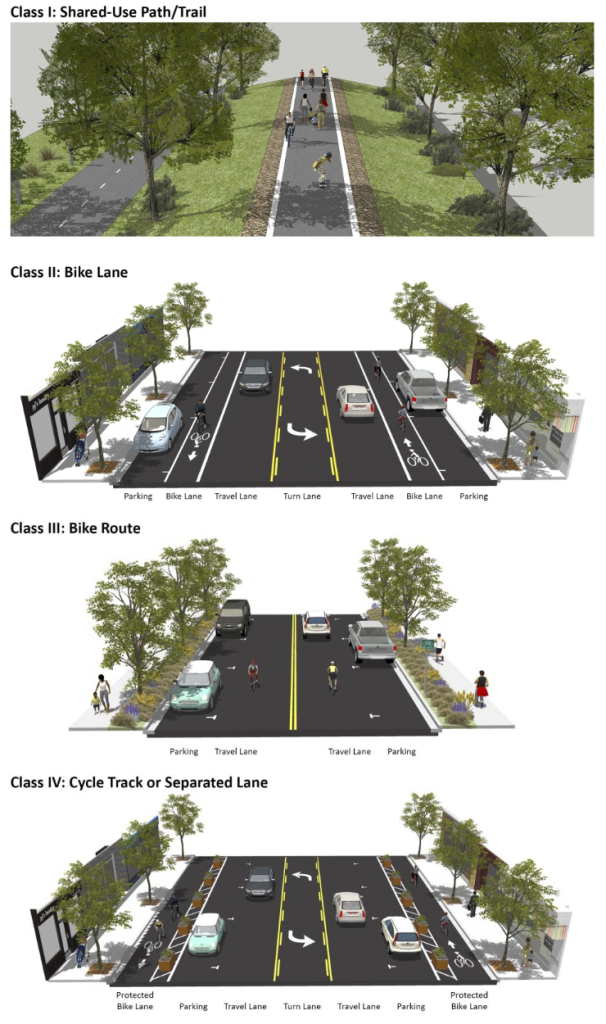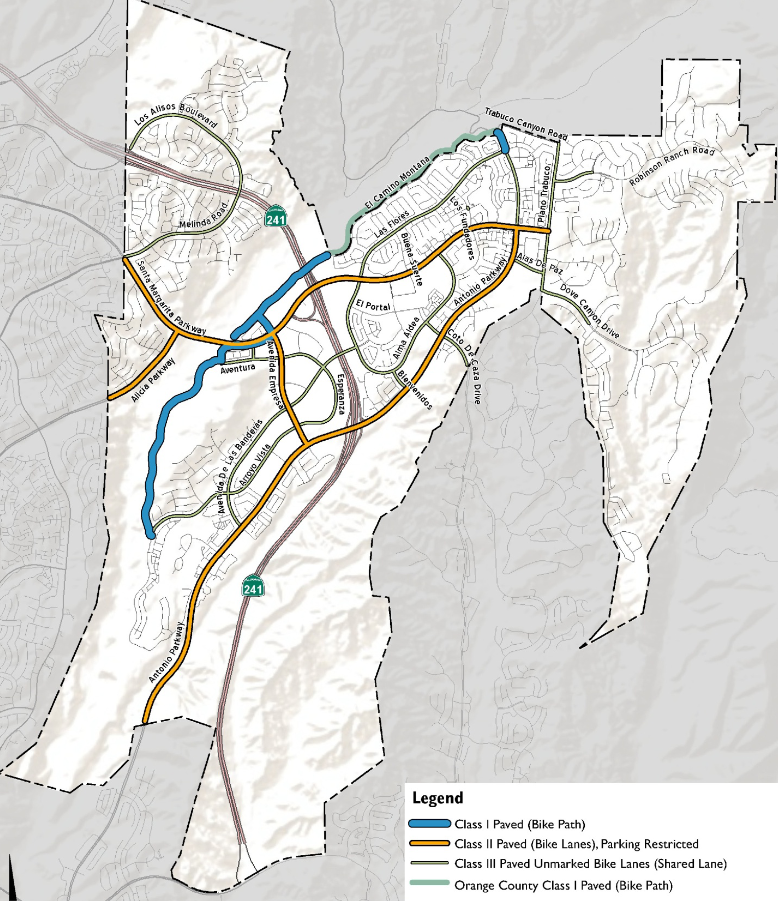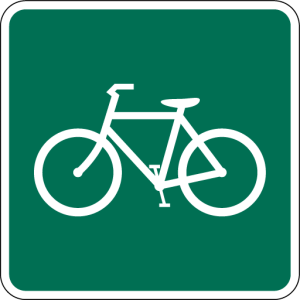Class I
Bicycle paths with exclusive rights-of-way intended to serve cyclists with the safest means of travel, such as the route through O’Neill Regional Park. Pedestrians and cyclists use these routes.
Class II
Bicycle lanes along the curb lane of a street or highway, such as along Santa Margarita Parkway or Antonio Parkway. The path provides for one-way travel and is generally delineated with special striping and signage to restrict on-street
parking.
Class III
Bike routes for shared use with pedestrian or motor vehicle traffic. Pavement markings and/or signs for shared use of outside travel lanes should be considered on Secondary and Collector roads where on-street parking or physical constraints prohibit the provision of on-street bike lanes.
Class IV
Bikeways - Separated Bikeways (Cycle Tracks): exclusive bike facilities that combine the user experience of a separated path with the on-street infrastructure of conventional bike lanes.

In practice, here in Rancho Santa Margarita, Class III Bike routes are extensively used. There are few instances where signs are incorporated, as it is up to the discretion of the Public Works/Traffic Engineering Department. Typically their decision to not include signage is backed by this reasoning:
"The traffic engineer and myself do not believe adding these additional signs will lead to increased bicyclist safety, and instead could lead to sign clutter, confusion, and increased maintenance costs without a significant return in benefit to the community including bicyclist."
Rancho Santa Margarita Acting City Engineer
Here at RSM Bike Safety, we believe these excuses are inadequate and the safeguarding of cyclists with signs to communicate road-use to drivers should be further encouraged.
Rancho Santa Margarita Bikeway Network (Circulation Element 2014)

